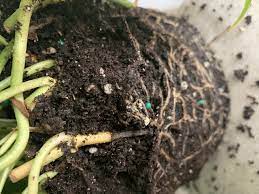Cinnamon is a spice derived from the bark of several species of trees in the Cinnamomum family. The most commonly used type of cinnamon is Cinnamomum verum or Cinnamomum zeylanicum, often referred to as “true cinnamon” or “Ceylon cinnamon.”
The cinnamon tree is native to Sri Lanka (formerly Ceylon) and parts of India, Bangladesh, and Myanmar. The spice is obtained from the inner bark of the tree, which is harvested and dried. The dried bark curls into the characteristic cinnamon sticks or quills that are commonly used in cooking and baking.
Cinnamon has been used for centuries for both culinary and medicinal purposes. It’s known for its distinctive sweet and warm flavor, which is often used in a variety of dishes, including desserts, beverages, and savory dishes.
In terms of health benefits, cinnamon is believed to have antioxidant and anti-inflammatory properties. Some studies suggest that it may help regulate blood sugar levels, lower cholesterol, and potentially aid in weight loss. However, more research is needed to fully understand the extent of these potential health benefits and the appropriate doses for therapeutic use.
The Economic Importance and Uses of Cinnamon Roots

Cinnamon is a well-known spice derived from the bark of trees in the Cinnamomum genus, particularly Cinnamomum verum (true cinnamon) and Cinnamomum cassia. While cinnamon bark is more commonly used, the roots of the cinnamon tree also have economic importance and various uses.
Here are the economic importance and uses of cinnamon roots:
1. Traditional Medicine: Cinnamon roots, like the bark, have been used in traditional medicine for their potential medicinal properties. They are believed to have antibacterial, antifungal, and anti-inflammatory properties.
2. Digestive Health: Cinnamon roots are often used to aid digestion and alleviate gastrointestinal issues.
3. Culinary Uses: Flavoring Agent: Cinnamon roots can be used as a flavoring agent in cooking and baking, similar to cinnamon bark. They can add a unique and slightly different flavor profile to dishes.
4. Cultural and Ritual Uses: In certain cultures, cinnamon roots may have cultural or ritualistic significance, and they might be used in traditional ceremonies, rituals, or religious practices.
5. Essential Oils and Aromatherapy: Cinnamon root oil can be extracted and used in aromatherapy, personal care products, perfumes, and scented candles due to its aromatic properties.
6. Natural Dyes and Textile Industry: Extracts from cinnamon roots can be used to produce natural dyes for fabrics and textiles, providing a reddish-brown color.
7. Pharmaceutical and Herbal Industry: Cinnamon root extracts can be used as a component in various pharmaceuticals, herbal supplements, and health products.
8. Bioactive Compounds and Research: Scientists and researchers study cinnamon roots for their bioactive compounds, aiming to understand their potential health benefits and develop new products based on these compounds.
9. Soil Erosion Control and Landscaping: Cinnamon trees, including the roots, can help with soil erosion control and are sometimes used in landscaping and reforestation efforts.
10. Agriculture and Horticulture: Cinnamon roots may play a role in plant propagation and grafting techniques in agriculture and horticulture.
Read Also: Cinnamon Bark: Economic Importance, Uses, and By-Products
11. Export and Trade: Cinnamon roots can be part of the export and trade industry, contributing to the overall economic activity of countries involved in the production and processing of cinnamon products.
The Products and By-products That Can Be Derived FromCinnamon Roots
Cinnamon is a popular spice derived from the bark of trees in the Cinnamomum genus. However, using cinnamon roots to obtain products and by-products is less common due to its limited usage and potential toxic compounds present in certain parts of the plant. Generally, the bark is the primary part used for obtaining cinnamon products. Nonetheless, I’ll provide information on potential products and by-products that could be derived from cinnamon roots, although their usage and commercial viability may be limited:
1. Cinnamon Extracts: Extracts can be obtained from the roots using various extraction methods, including solvent extraction, steam distillation, or cold pressing. These extracts may contain essential oils and bioactive compounds present in the roots.
2. Cinnamon Root Oil: The roots can be steam-distilled to obtain essential oil, which may contain aromatic compounds with potential applications in aromatherapy, perfumery, or as a flavoring agent.
3. Cinnamon Root Powder: The roots can be dried, ground into a powder, and used as a spice or flavoring agent, although the bark is the more common part used for this purpose.
4. Herbal Remedies: In traditional medicine, cinnamon roots might be used in the preparation of herbal remedies for various ailments. However, caution should be exercised due to potential toxicity and variability in composition.
5. Cinnamon Root Tea: Dried cinnamon roots can be used to prepare infusions or teas. However, it’s important to ensure that the roots are prepared safely and consumed in moderation due to potential toxic components.
6. Composting or Mulching: After extracting essential oils or powders, the remaining plant material can be utilized as organic matter for composting or mulching in gardens.
In conclusion, it is essential to note that certain parts of the cinnamon plant, including the roots, may contain compounds that can be toxic or harmful to humans or animals. As such, caution should be exercised when utilizing any part of the plant for consumption or extraction of products. Always consult with a qualified professional before using cinnamon roots or any plant material for medicinal or other purposes.
Read Also: Benefits of Passion Flowers

